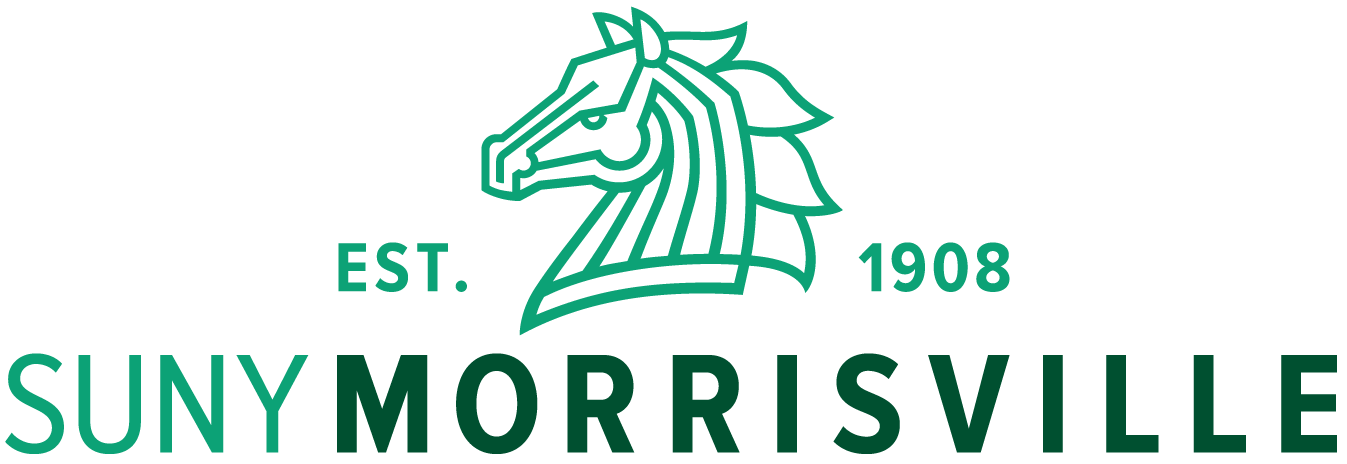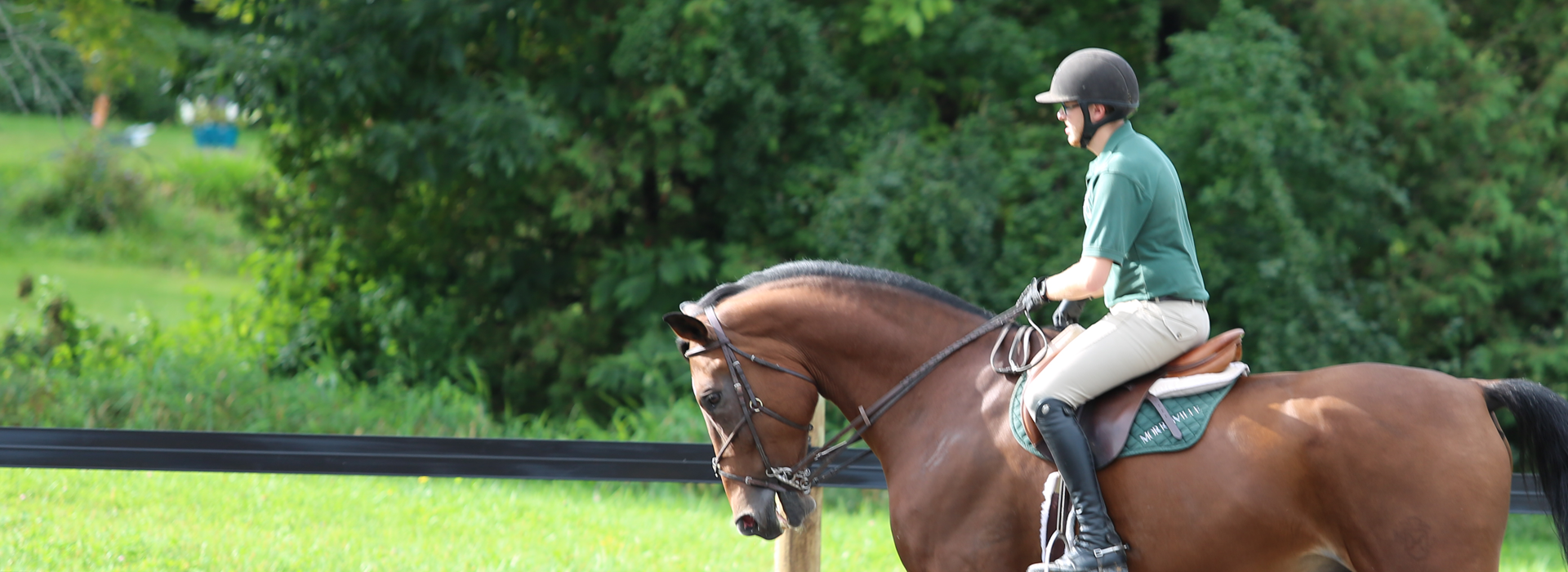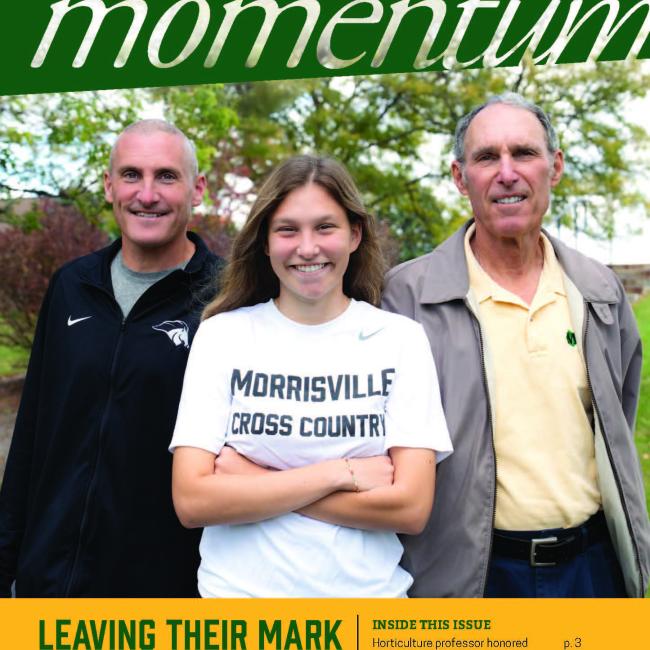Sibell pops her head over the stall door, flattens her nose and pins back her ears. If horses could hand out grades, right now her rider would be receiving a C-minus in
treats.
Message received.
Marcus Livermore, the mare’s obedient servant, rummages through the brushes, combs and hoof picks in his grooming kit and fishes out a peppermint. Sibell nickers at the sound of crumpling candy wrapper.
“She loves treats with a passion,” Livermore said. “She’s very patient. She’ll wait until you’re done with what you have to do but then she digs in begging for treats and
she’s relentless about it.”
They are a good team, the otter-brown mare with the kind eye and the lanky 20-year-old with the ready smile. Livermore rode to a national collegiate championship last May in the individual novice over fences class, the first SUNY Morrisville rider to come home as a national champion and the first to represent the college on the national stage since 2004.
He claimed the title after what head coach Erin Dunn called a “pristine ride” at the Intercollegiate Horse Shows Association (IHSA) Finals.
The gold medal he won that day hangs proudly next to the desk in his apartment, a reminder of where he is going and where he has been.
Livermore was 8 when he started riding, a kid from the North Side of Syracuse, New York, who loved animals and begged his parents to take him into the barns at The Great New York State Fair so he could look at the horses. “It came out of nowhere,” he said of the force that bound him early and completely to riding.
He showed locally, then began competing seriously in eighth grade when he joined an Interscholastic Equestrian Association team, the national program for younger riders. He rode well, but never quite well enough, never advancing beyond regionals.
That changed when he came to SUNY Morrisville. Drive out of the village, past the harness racing track and Western barns, and make a sharp right onto Fearon Road. The low-slung green building with the copper cupola and trotting horse weathervane is the hunt seat training center, home to classrooms, three indoor riding arenas and a breeding wing where stallions are king. Pause for a moment; breathe in the scent of hay and leather and sweat, listen to the soundtrack of nickers and snorts.
Livermore is a junior majoring in equine science and it’s here, where the semester’s cadence is measured in the click of hooves and three-beat metronome of a canter,
that he found the edge needed to spur him forward.
The passion and determination were always there, “the drive to always be better,” Livermore said. “I’m always looking to improve my riding in any way, shape or form.”
What Morrisville gave him were teachers with two legs and four: coaches who challenge and demand but “are always so willing to help,” and horses who hold their riders to a higher standard.
There is Serendipity, Livermore’s favorite in the barn. They share a connection, he said, a bond that includes a similar thermostat: “Neither of us likes the cold.”
And there is Sibell, the big Warmblood with the passion for peppermints. Students are assigned two horses to work with and grow together, and she and Livermore have been teammates for a while. Talk with any rider and they will tell you that mares have definite opinions. Sibell’s is that if her rider doesn’t ask properly, she need not answer.
“She’s very particular about how you ask her to do something,” Livermore said. “She’s not going to give it to you. You have to work for it.”
In the arena, he swings effortlessly into the saddle and the two warm up, threading a class of beginning riders who steal glances as Sibell bends into a turn and Livermore rises fluidly in the posting trot, in harmony with the mare.
Coach Dunn, watching from the rail, nods approval.
Livermore, she said, is a student of horsemanship. “He studies his craft, works on it both inside and outside the ring ... We have a society that wants things fast and
doesn’t want to put in the time. He’s certainly not that.”
Both of his assigned horses must be ridden every afternoon, Monday to Friday, and there are three riding lessons each week, two over fences and one on the flat. Students in the equine science program — Livermore received his associate degree in equine science & management in 2018 and is now working toward his bachelor’s degree — are also responsible for all aspects of horse care. They muck stalls, make sure each of the barn’s 50 horses are turned out daily, do the laundry and handle routine health care. As a junior, Livermore is adding management to his portfolio. As a senior, he is expected to be a leader.
It’s this hands-on experience that sets Morrisville apart, Livermore said. “I recommend Morrisville to anyone who has a passion for horses. There are so many options here, and there’s always somebody ready to help you out … Being in the barn every day is that added plus.”
After college he would like to be a professional on the show-jumping circuit, riding for a large show barn. For now, his goal is closer at hand: Back to IHSA Nationals in 2019 with a dream of winning the Cacchione Cup, awarded to the nation’s top collegiate hunt seat rider.
And so there are horses to be ridden, tack to be cleaned, practice to be perfected. Harmony is not a coincidence.
Hands soft — the way she likes them — Livermore asks and Sibell upshifts into a canter. Her ears flick, listening. Livermore guides her quietly, confidently: Head up, heels down, eyes on the prize.
Good to Know
The Intercollegiate Horse Shows Association was established in 1967 by Robert Cacchione, when he was an 18-year-old sophomore at Fairleigh Dickinson University in New Jersey.
Cacchione’s idea was to put competition within the reach of students who didn’t own a horse. His vision lives on in IHSA’s unique competitive format: Riders draw their
horses, provided by the college hosting the show, in a lottery before each class. Schooling is not allowed.
IHSA began with just two colleges competing in hunt seat. Today, there are more than 400 member colleges in 45 states and Canada, and more than 10,000 student riders in hunt seat, Western horsemanship and reining.
SUNY Morrisville competes in Zone 2, Region 3 with 10 other teams including SUNY Albany, Cobleskill and Oneonta and the current IHSA national team champion, Skidmore College.
One famous IHSA alum is Olympic gold medalist Beezie Madden of Cazenovia, who won the Cacchione Cup — awarded to the top hunt sear rider — competing for
Southern Seminary in 1984.


